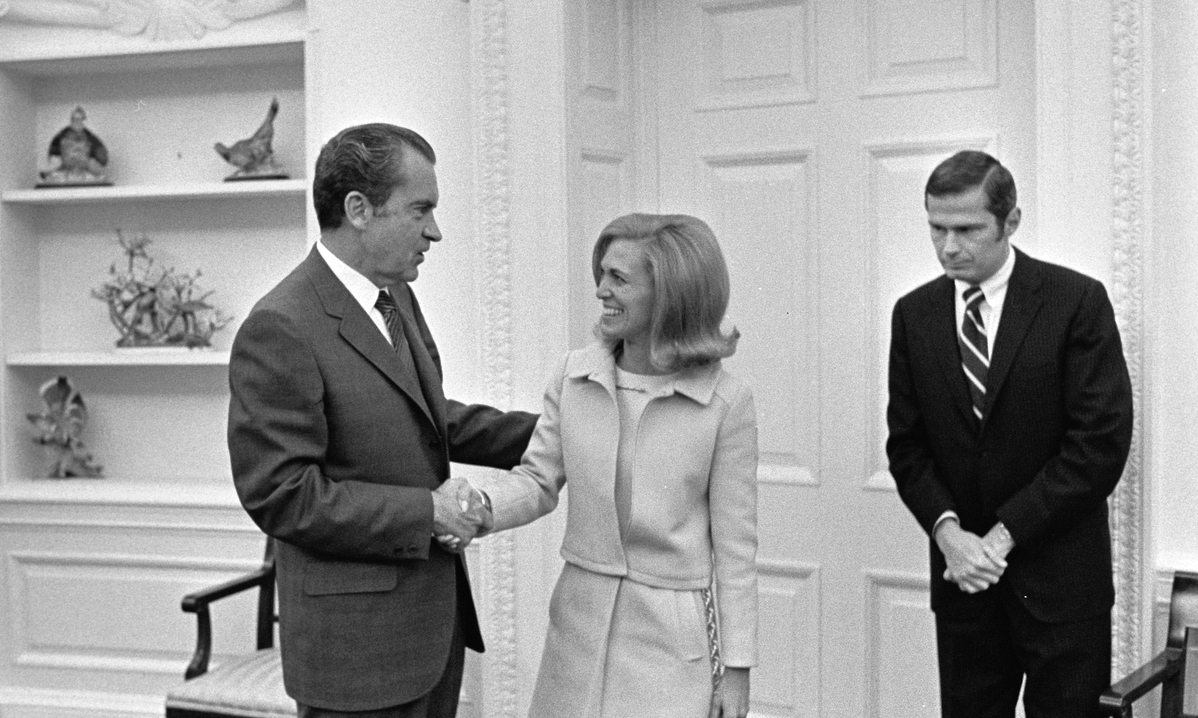President Nixon appointed Barbara Franklin to oversee efforts at appointing more women to high-level positions in government.
In the final months leading up to the 1972 election, President Nixon signed into law two pieces of legislation that addressed gender equality in the workplace. These two laws would create significant headway in the fight for women’s rights. Furthermore, following Nixon’s landslide reelection in November 1972, these laws would be used to their full potential in Barbara Franklin’s program to recruit talented women to top-positions in the federal government.
The Equal Employment Opportunity Act was passed in March 1972. It amended and expanded the scope of Title VII of the Civil Rights Act of 1964. The Equal Employment Opportunity Act granted the Equal Employment Opportunity Commission (EEOC) litigation authority, allowing it to pursue cases of employment discrimination in the judicial system. The new law also asserted that educational institutions, including colleges and universities, and local and state governments were subject to Title VII, something that had not been the case in the original language of the Civil Rights Act. Perhaps most importantly, the Equal Employment Opportunity Act also stipulated that the federal government and the executive departments and agencies were subject to Title VII as well. This required all personnel actions to be free of discrimination on the basis of race, color, sex, religion, or national origin.
Several months later, President Nixon signed Public Law 92-496 into law. Passed in October 1972, Public Law 92-496 expanded the jurisdiction of the Commission on Civil Rights to include sex discrimination. The Civil Rights Commission was responsible for ensuring that the federal government enforced civil rights laws fairly. By expanding its mandate to include sex discrimination, Public Law 92-496 was a significant step forward in ensuring that women were treated the same under the law and in the workplace by guaranteeing them the protection they needed.
With this pair of legislative victories, Barbara Franklin set out to expand the Nixon Administration’s recruitment programs. Franklin outlined her goals for the program to recruit women to top-positions to the federal government in a memorandum to Fred Malek several weeks after President Nixon’s landslide victory. Franklin wrote, “Individual women should, of course, be considered for posts on their merits.” Franklin continued to argue that as many women as possible should be appointed to positions in the Administration because “women contributed significantly to RN’s landslide victory” and because “we need to hold and solidify the moderate portion of the women’s movement for RN’s ‘new majority.’” Franklin furhtermore asserted, “Our actions in placing women in top jobs now is a strategic step toward keeping women voters with us and the Republican Party.” Franklin also suggested that the Administration not lose its focus on the womens issue, and in fact wanted to ensure that they refocus on placing women, with the ultimate goal of placing at least one woman at the Cabinet Secretary level.
With recent legislation regarding sex discrimination in mind, Franklin further commented on the Administration’s process of evaluating the qualifications of women. She wrote, “We all agree that people—men and women—should be qualified for jobs in which they are placed. However, subconsciously and often unintentionally people tend to evaluate women’s qualifications differently.” Franklin argues that women are expected to be more highly qualified than men are for the same job, that a woman had to be “nearly perfect” to be considered as qualified as a man. Franklin also emphasizes that women’s appearance and age are more critically examined than are men’s, and that this is inherently sex-based discrimination. At its core, however, Franklin’s argument contends that women should be considered fairly, without undue scrutiny or prejudice.
In the months leading up to the 1972 election and the weeks immediately following, the Nixon Administration made significant steps towards bringing women to parity with their male counterparts. The Equal Employment Opportunity Act of 1972 and Public Law 92-496 expanded the scope of civil rights legislation to encompass sex discrimination, and in so doing held the federal government, in addition to local and state governments and educational institutions, to a higher and more equal standard.

